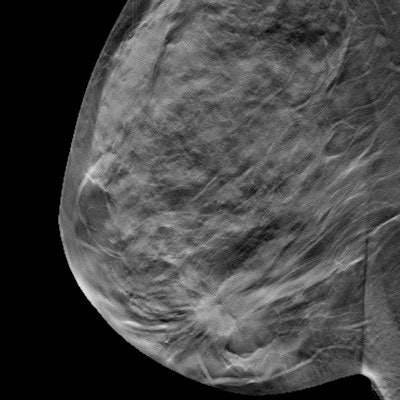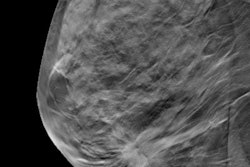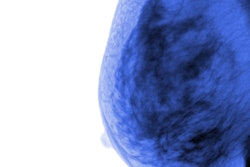
Synthesized 2D mammography plus digital breast tomosynthesis (DBT) performs comparably to full-field digital mammography (FFDM) alone when it comes to identifying microcalcifications, according to a study published online October 2 in Radiology.
The findings suggest that practices can use synthesized 2D images with DBT in a screening protocol without fear of missing these calcium deposits, which can be a sign of early breast cancer, according to a team led by Dr. Yi-Chen Lai of Taipei Veterans General Hospital in Taiwan.
"[Synthetic mammography] plus DBT was comparable to FFDM alone in the identification of microcalcifications previously warranting recall at screening," the group wrote.
Adding DBT to conventional 2D mammography has been shown to reduce recall rates and increase cancer detection, but it also doubles the radiation dose. Generating synthesized 2D images from the DBT exam addresses this problem, reducing radiation dose by 45% and also shortening the exam time.
But whether synthesized 2D mammography is equivalent to FFDM for detecting microcalcifications has been unclear. Lai's group sought to compare synthesized 2D mammography's performance with that of conventional 2D mammography, including 72 screening mammograms recalled for microcalcifications between June 2015 and August 2016. Of these, 54 had benign microcalcifications and 18 had malignant ones. Lai and colleagues assessed sensitivity and specificity for microcalcification detection for synthesized 2D plus DBT and for digital mammography alone.
Relative to FFDM, synthesized 2D mammography with DBT had similar sensitivity and specificity for detecting microcalcifications previously flagged for recall on screening mammography, the researchers found.
| Performance of synthesized 2D and FFDM for identifying microcalcifications | ||
| Performance measure | FFDM | Synthesized 2D + DBT |
| Sensitivity | ||
| All microcalcifications | 80% | 75% |
| Malignant microcalcifications | 92% | 94% |
| Specificity | ||
| All microcalcifications | 98% | 95% |
| Malignant microcalcifications | 98% | 95% |
Given the importance of detecting calcifications in the screening setting, the study results could further boost the use of DBT, wrote Dr. Min Sun Bae and Dr. Woo Kyung Moon, both from Seoul National University in South Korea, in a related editorial. But more research is needed.
"Multiple studies have shown that the performance of [synthetic mammography] plus DBT is similar to that of FFDM in breast cancer screening," Bae and Moon wrote. "However, this has not yet been validated in randomized controlled trials. It is important to note that current published screening guidelines do not recommend DBT instead of digital mammography for routine screening."




















